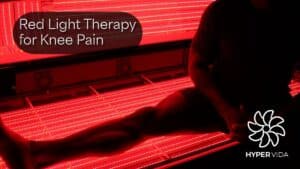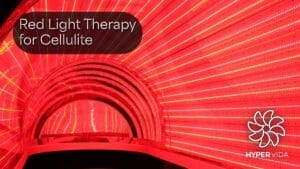As the days get shorter and the sky gets cooler, many of us notice a change. In our energy, mood and overall outlook. You might feel more sluggish than usual, crave comfort food or struggle to get out of bed in the morning. For some, these seasonal changes lead to a condition called seasonal affective disorder (SAD), a type of depression that typically starts in the fall and can begin as early as winter and last through the colder, darker months.
If you’ve experienced this pattern year after year, you’re not alone. Millions of adults in the US report a seasonal dip in their mental health, with symptoms ranging from mild irritability to full blown depressive episodes. These recurring episodes are a sign of SAD. Even in sunny places like Miami, seasonal depression can feel unexpected—but even here, changes in daylight can affect your internal rhythms and emotional well-being.
One of the most talked about natural remedies for SAD is vitamin D, often called the “sunshine vitamin” for its role in mood regulation and its natural production through sun exposure. Decreased serotonin levels which can be triggered by reduced sunlight are considered a key factor in the development of SAD. But does it really work? Can taking vitamin D really lift the fog of seasonal depression or is it just hype?
In this article we’ll dive into the science behind vitamin D for seasonal depression, including how it affects the brain, what the research says about its effectiveness, how much you may need and how services like light therapy—offered locally by Hypervida—can complement your approach. Whether you’re looking for a natural boost or trying to understand your symptoms, this guide is here to help.
What is Seasonal Affective Disorder (SAD)?
Seasonal Affective Disorder, commonly abbreviated as SAD, is a type of depression that follows a seasonal pattern—most often starts in late fall and resolves in spring. It’s not just “winter blues”. It’s a diagnosable mental health condition classified among mental disorders, with real symptoms such as depressed mood that can impact a person’s daily life.
Key Symptoms of SAD:
- Low energy or fatigue
- Loss of interest in activities you used to enjoy
- Oversleeping or trouble waking up
- Intense carbohydrate cravings and weight gain
- Decreased appetite* Difficulty concentrating
- Feeling hopeless or sad
- Social withdrawal
While SAD can affect anyone, it’s more common in women and younger adults. It’s also more prevalent in areas with long winters and limited sunlight. People living in northern regions, like Alaska or the Pacific Northwest, are more susceptible, but even residents of sunny states like California can experience SAD during overcast weeks or indoor-heavy lifestyles.
In some cities where many people work long hours indoors or commute before sunrise, reduced sunlight exposure can disrupt the body’s natural rhythms. This disruption affects circadian cycles—the biological clock that governs sleep, hormone production and mood.
One of the main culprits tied to SAD is a drop in serotonin levels, a neurotransmitter closely linked to feelings of well-being. Reduced sunlight can also affect melatonin levels which can lead to disrupted sleep and further worsen mood imbalances. These biological changes are what we call seasonal depression.
For many people SAD isn’t just a phase, it’s a cyclical mental health challenge that returns every year. Fortunately more awareness and research has led to promising solutions including nutritional supplementation with vitamin D and light-based therapies that mimic the effects of sunlight.
What is Vitamin D Deficiency
Vitamin D deficiency is more common than you think especially during the winter months when sunlight exposure drops and our bodies produce less of this essential nutrient. Defined as having serum vitamin D levels below 20 ng/mL, this deficiency can have far reaching effects on both physical and mental health. Research has shown that low vitamin D levels are linked to an increased risk of seasonal affective disorder (SAD), major depressive disorder and other depressive disorders.
Vitamin D plays a crucial role in mood regulation, immune function and healthy sleep patterns, all factors that impact how we feel day to day. When vitamin D deficiency sets in people often notice more pronounced depressive symptoms such as fatigue, decreased motivation and general malaise.
These effects can be especially noticeable during the winter months when reduced sunlight makes it harder to maintain optimal vitamin D levels. Diagnosing vitamin D deficiency is simple: a healthcare professional can order a blood test to measure your serum vitamin D levels.
If you’re deficient, treatment options include taking vitamin D supplements, increasing safe sun exposure and incorporating fortified foods into your diet. Addressing vitamin D deficiency not only supports overall health but can also play a key role in managing seasonal affective disorder and other mood related conditions.
Vitamin D and Mood and Brain Health
Vitamin D is most well known for its role in bone health and immune function but it also plays a crucial part in mental wellness—especially when it comes to mood regulation. It’s a fat soluble vitamin which means its absorption and storage in the body is influenced by dietary fats.
At the biological level vitamin D helps regulate several key processes in the brain:
- Serotonin Production: Vitamin D influences the conversion of tryptophan into serotonin, a neurotransmitter that affects mood, sleep and emotional balance by regulating serotonin activity.
- Dopamine Regulation: Some research suggests that vitamin D also plays a role in maintaining dopamine levels which are closely tied to motivation and pleasure.
- Neuroprotection: Vitamin D has antioxidant properties that help protect neurons from inflammation and oxidative stress, both of which are implicated in depressive disorders and supports the health of the central nervous system.
- Circadian Rhythm Synchronization: Exposure to natural sunlight helps maintain healthy sleep-wake cycles. Vitamin D—produced in the skin via UV-B radiation—plays a role in anchoring these rhythms which are often disrupted in individuals with SAD.
This “sunshine vitamin” is unique in that it’s produced endogenously when skin is exposed to sunlight. During the shorter days of winter or when you spend extended time indoors your body’s ability to synthesize vitamin D decreases. As a result levels drop—sometimes significantly—especially in regions where sunlight is less intense in winter months. Vitamin D is also essential for cell growth further highlighting its broad biological importance.
Even in sunny states like Florida where sunlight is abundant year round, lifestyle patterns can still lead to deficiencies. Residents in areas like Miami Beach for instance may spend long hours indoors at work or use high-SPF sunscreens daily—both of which limit UV-B exposure and reduce vitamin D synthesis.Since the body relies on regular sun exposure to maintain vitamin D levels supplementation and targeted light therapy are often used as seasonal tools to help restore balance and support mental well being.
Does Vitamin D Help with SAD?
The link between vitamin D and seasonal affective disorder has been the subject of growing research in recent years and the evidence, while still evolving, points to a strong connection especially for those with low vitamin D levels. Vitamin D deficiency has been linked to increased depression symptoms especially during the winter months when sunlight exposure is limited.
SAD affects different populations differently with certain demographic groups—such as women and individuals living at higher latitudes—experiencing a higher prevalence and impact.
Strategies for managing SAD often include optimizing vitamin intake such as ensuring adequate levels of B vitamins, vitamin C and vitamin D as these nutrients play a role in mood regulation and may help reduce the risk or severity of symptoms.
Treatment approaches to address SAD include light therapy, medication and increased exposure to natural sunlight all of which are used to treat SAD and alleviate its symptoms.
Observational Evidence
Many studies have found that people with SAD have lower serum vitamin D levels than those who don’t experience seasonal mood changes. This isn’t surprising given that SAD occurs in winter months when sun exposure is limited and the skin’s natural production of vitamin D drops.
Populations with limited daylight exposure, such as those living in high latitudes or who work in indoor environments, often show both low vitamin D levels and elevated depressive symptoms. These patterns suggest a relationship between insufficient vitamin D and the emergence of seasonal mood disorders.
What This Means for You
If you’re experiencing symptoms of seasonal depression, checking your vitamin D levels is a smart place to start. A simple blood test can reveal if you’re deficient and from there your healthcare provider can help you determine if supplementation or a more holistic approach that includes light therapy is right for you.
At Hypervida we recognize that mental health support is never one-size-fits-all. That’s why we advocate for personalized, evidence-informed wellness strategies, especially during the darker months when mood fluctuations are common and often overlooked.
How Much Vitamin D for Seasonal Depression?
When it comes to addressing seasonal depression through supplementation one of the most common questions is: How much vitamin D is enough? The answer depends on several factors including your current vitamin D levels, age, lifestyle, skin tone, geographic location and overall health status.
General Guidelines
For most adults the standard recommended dietary allowance (RDA) for vitamin D is:
- 600 IU per day for adults up to age 70
- 800 IU per day for adults over 70
But these are minimums to maintain general bone and immune health not to correct deficiency or support mental health. In practice many clinicians recommend 1,000 to 2,000 IU per day during the winter months for adults at risk of deficiency or dealing with seasonal affective symptoms.
Some studies exploring vitamin D and seasonal affective disorder have used much higher doses—ranging from 4,000 to 6,000 IU per day—with participants experiencing significant improvements in mood. But please note that such higher dosages should only be taken under medical supervision as prolonged excessive intake can lead to toxicity.### Testing Before Supplementing
Because everyone metabolizes vitamin D differently and because deficiency isn’t always obvious the best way to determine how much vitamin D you need is through a serum 25-hydroxyvitamin D blood test. This simple lab test measures your vitamin D levels and helps guide safe and effective supplementation.
- A level below 20 ng/mL is generally considered deficient.
- 20–30 ng/mL may be insufficient for optimal mental wellness.
- 30–50 ng/mL is often regarded as a healthy target range.
- Levels above 100 ng/mL can be toxic and should be avoided.
If you’re experiencing symptoms like fatigue, low mood, brain fog or increased sleep it’s worth checking your vitamin D levels, especially during the darker months of the year.
Safety First
While vitamin D toxicity is rare it can occur particularly when individuals take high-dose supplements over long periods without supervision. Symptoms of toxicity include nausea, vomiting, muscle weakness, confusion and kidney complications. To avoid these risks always follow dosing recommendations provided by a healthcare professional and re-test your levels periodically if you’re supplementing long-term.
Vitamins and Supplements Beyond Vitamin D
While vitamin D often takes the spotlight when discussing seasonal depression it’s not the only nutrient that plays a role in mental well-being. Certain vitamins such as B, C and D have been studied for their potential to support mental health and may help alleviate symptoms of mood disorders.
In fact a growing body of research suggests that several vitamins and minerals may help support mood, energy and cognitive function, especially during the winter months when nutritional gaps and insufficient vitamin intake are common.
Dietary sources including animal-based foods like fatty fish, eggs and liver are important for obtaining these nutrients. Fatty fish in particular are rich in vitamin D3 and are effective at raising serum vitamin D levels which can be beneficial for individuals with mental disorders such as depression and Seasonal Affective Disorder (SAD).
B-Vitamins
B-complex vitamins—including B6, B9 (folate) and B12—are essential for healthy brain function and neurotransmitter production. Deficiencies in these vitamins have been linked to depression, fatigue and cognitive issues. Vitamin B12 in particular plays a key role in regulating mood and preventing homocysteine buildup which is associated with mental decline.Not a vitamin, but omega-3 fatty acids (found in fish oil) are well known for their mood stabilizing properties. EPA and DHA, two of the critical types of omega-3s, have been studied for reducing symptoms of depression and improving emotional resilience.
Magnesium
This mineral supports over 300 biochemical reactions in the body, including those involved in brain and nervous system function. Low magnesium levels have been linked to anxiety, irritability and poor sleep – all of which can worsen SAD symptoms.
Vitamin C and Zinc
Both of these nutrients support immune function and act as antioxidants, reducing inflammation and oxidative stress in the body. Chronic inflammation has been linked to depression, making these nutrients important for overall mental health. Research also suggests that vitamin C deficiency may be associated with clinical depression and some studies have reported improvement in depressive symptoms with vitamin C supplementation.
Vitamin K2 (with Caution)
Some sources suggest that vitamin K2 works synergistically with vitamin D, especially in supporting calcium metabolism and cardiovascular health. However, its role in mental health is unclear and should be approached with caution, especially for those on blood thinners or other medications.
A Whole-Body Approach
No single supplement is a magic bullet, but a well-rounded nutritional plan that includes vitamin D, B-vitamins, magnesium, omega-3s and other supportive nutrients can create the biological conditions for emotional balance. Many people find that combining targeted supplementation with lifestyle changes such as exercise, sleep hygiene and cognitive therapy , produces the best results for managing seasonal depression.
In the next section we’ll look at how light therapy can enhance vitamin D strategies and offer a non-invasive way to boost seasonal moods.
Light Therapy and Vitamin D: A Service That Supports Seasonal Well-Being
While vitamin D supplementation is critical for winter mental health, it’s only part of the picture. For many people, especially those sensitive to changes in daylight, light therapy provides an additional (and often more immediate) boost to mood, focus and energy. When considering UV-B light therapy or natural sunlight for vitamin D production, be sure to balance sun exposure to avoid increasing the risk of skin cancer while supporting overall skin health.
What Is Light Therapy?
Light therapy, also known as phototherapy, involves exposure to bright artificial light that mimics natural sunlight. Unlike standard indoor lighting, therapeutic light boxes emit light at an intensity of 10,000 lux which helps regulate circadian rhythms and stimulate serotonin production. This is especially helpful during the darker months when the body’s internal clock can fall out of sync and lead to fatigue and low mood.
Traditional light boxes don’t produce vitamin D but some specialized light therapy systems now emit UV-B wavelengths which stimulate the skin’s production of vitamin D naturally, without excessive exposure to harmful UV rays. These devices can be an excellent complement to oral supplementation especially for those who prefer non-ingestible wellness solutions or have trouble with nutrient absorption.
How Hypervida Supports You with Light Therapy

At Hypervida we offer vitamin D light therapy sessions that combine safe, controlled exposure to UV-B light with a personalized wellness approach. These sessions are for individuals experiencing symptoms of seasonal depression or anyone looking to maintain healthy vitamin D levels during the darker times of the year.
Our equipment is FDA-cleared and designed to optimize both mood regulation and natural vitamin D synthesis, providing a dual benefit. A typical session lasts between 5 and 20 minutes and is guided by a wellness professional to ensure both safety and effectiveness.
This service is especially helpful for those who:
- Spend long hours indoors or in artificial lighting
- Are sensitive to seasonal mood shifts
- Want a drug-free, evidence-based way to boost emotional wellness
- Prefer an alternative to oral supplementation
Many clients find that regular light therapy sessions help them feel more energized, sleep better and regain emotional clarity – especially during late fall to early spring.
Whether you’re dealing with clinical SAD or just feel “off” in the winter months, light therapy can be a game-changer. It’s fast-acting, non-invasive and fits into your self-care routine.
Where We Are
Hypervida serves individuals and families throughout Miami and surrounding areas, offering integrative wellness solutions for year-round balance.
Our vitamin D light therapy services are available at our conveniently located office at:
846 Lincoln Rd, Miami Beach, FL
From Downtown Miami to Wynwood, Little Havana, Brickell, and the surrounding beachfront neighborhoods we welcome clients who are looking for natural ways to manage seasonal depression, restore vitamin D levels and improve overall emotional well-being.
Hypervida is here to support you.
We combine evidence-based practices to create customized programs that meet you where you are, physically, emotionally and seasonally. Contact our team to schedule a session or learn more about our full range of wellness services.
Beat Seasonal Depression with Vitamin D Light Therapy
Seasonal depression or seasonal affective disorder (SAD) can make the winter months feel especially tough. One of the most effective ways to address these seasonal mood changes is through vitamin D light therapy—a treatment that combines the benefits of vitamin D supplements with the mood-boosting effects of light therapy.
Light therapy involves sitting near a special light box that mimics natural sunlight and helps to reset your body’s internal clock and mood. When combined with vitamin D supplements this can help raise serum vitamin D levels which are often lower during the winter months.
Research has shown that vitamin D light therapy can significantly relieve SAD symptoms such as low mood, fatigue and social withdrawal and may even reduce the risk of developing other mental health conditions like major depressive disorder and bipolar disorder.
To get started with vitamin D light therapy you can purchase a light box and vitamin D supplements over the counter or consult with a mental health professional for personalized guidance. Make sure to follow the correct dosage and treatment recommendations to ensure both safety and effectiveness.
By combining these two powerful tools you can take proactive steps to support your mental health, boost your vitamin D levels and get your energy and outlook back during the winter months.
Beat Seasional Depression with Vitamin D Light Therapy
Seasonal depression is more than just a winter slump, it’s a real, recurring condition that can disrupt your mood, motivation and quality of life. Whether you’re battling intense SAD symptoms or noticing subtle changes in your energy and outlook paying attention to your vitamin D levels could be an essential step towards restoring emotional balance.
From influencing serotonin and dopamine production to regulating circadian rhythms vitamin D plays a huge role in brain health, especially during the months when sunlight is scarce. Supplementation can help many and when combined with complementary therapies like light therapy the benefits may be even greater.
At Hypervida we believe in empowering our community with tools that are both science-backed and deeply personalized. Our vitamin D light therapy service offers a safe, natural and fast-acting way to support your mood and vitality through the darker seasons. If you’re feeling off this winter know you’re not alone, and support is just a few steps away. Book a session today!








